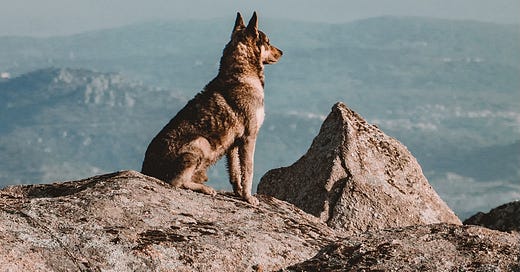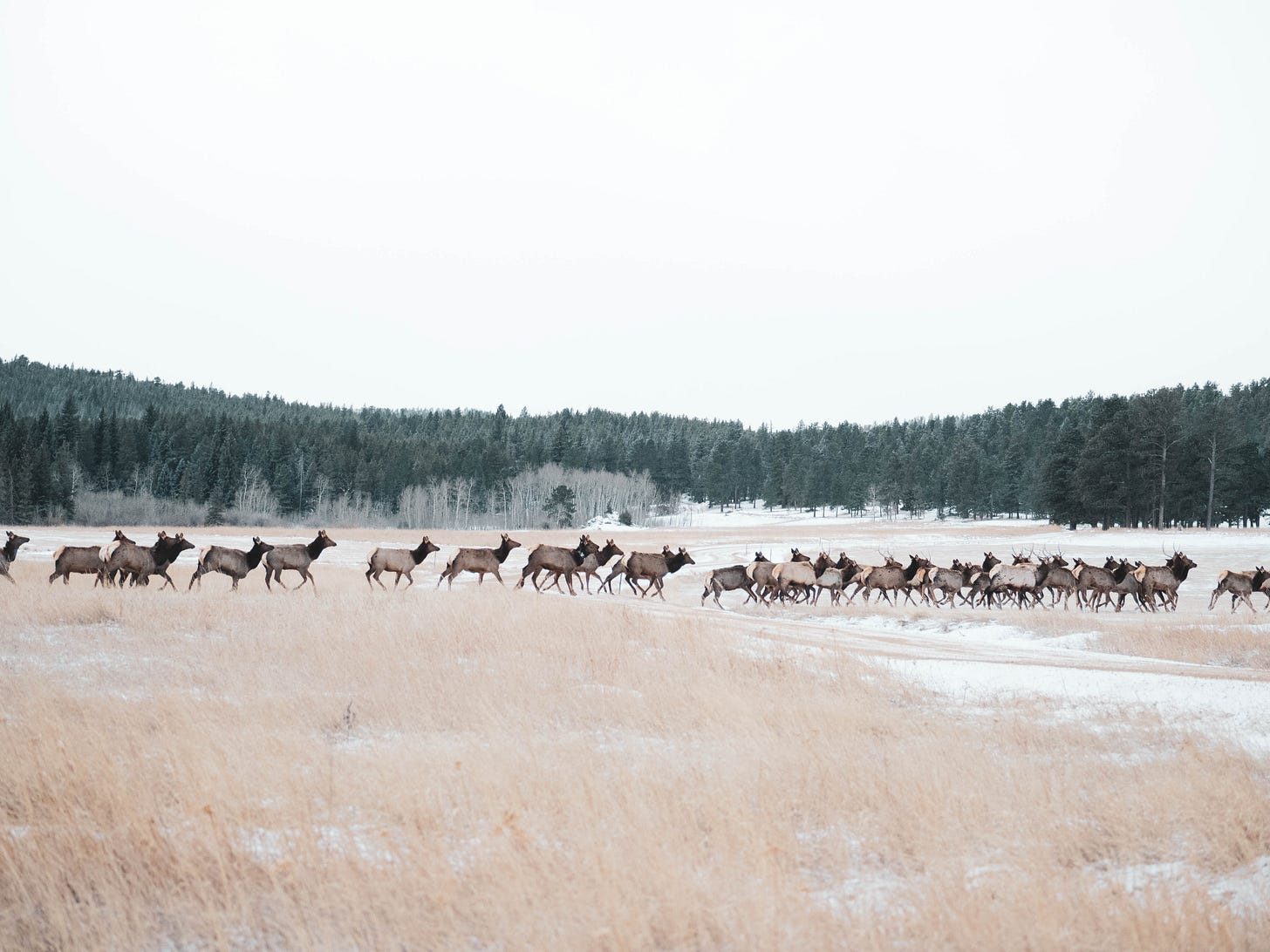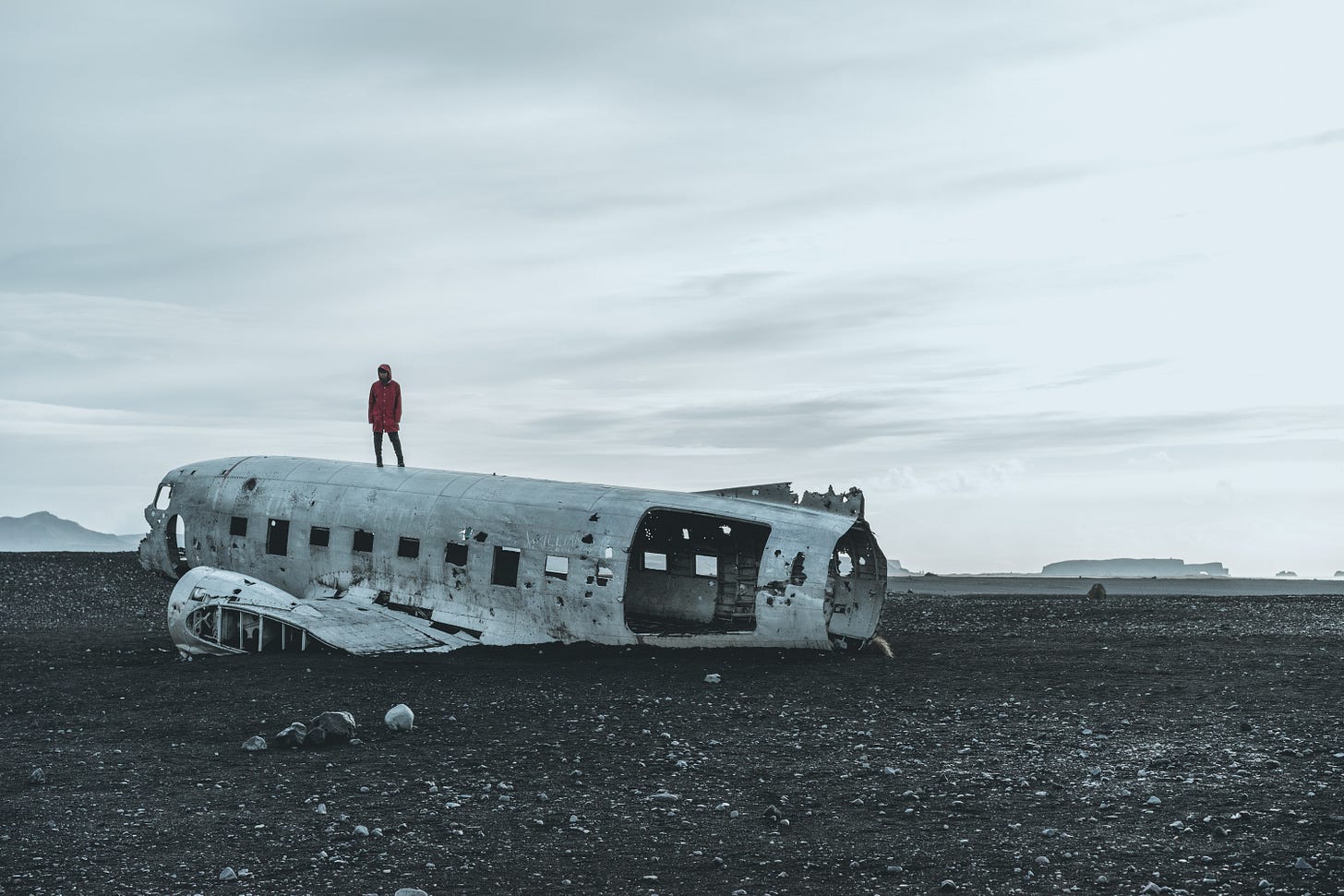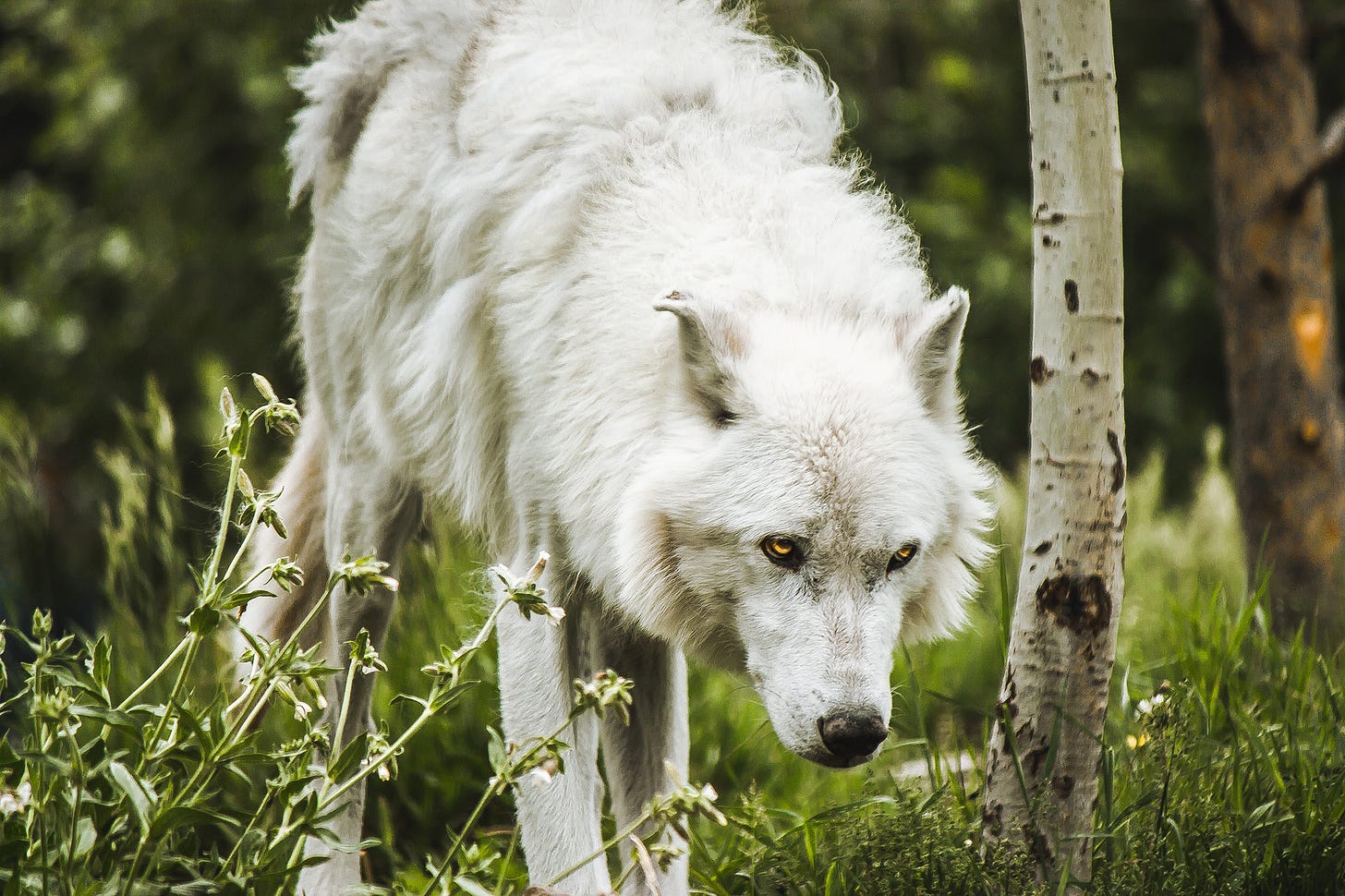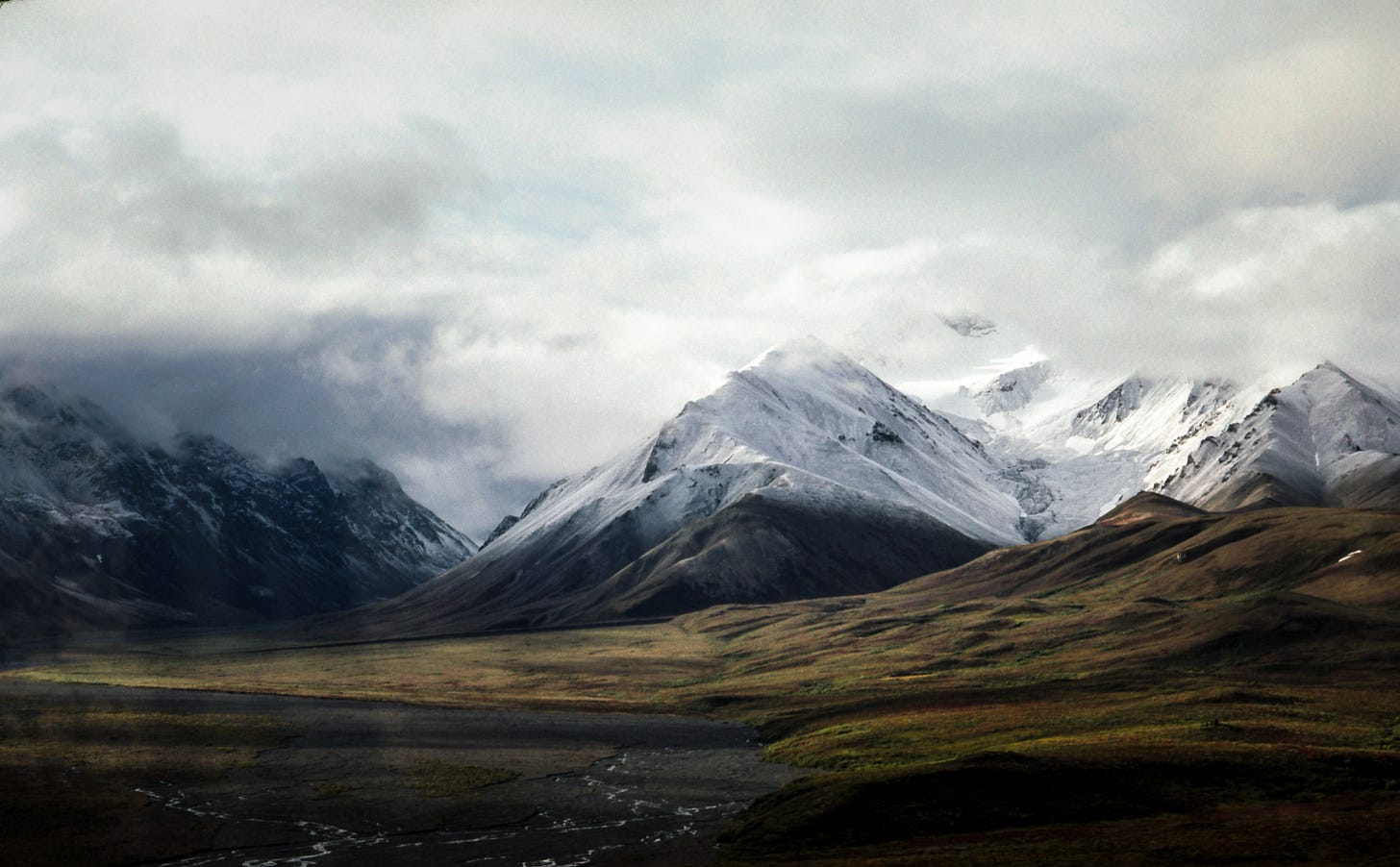wolves. brands. being. becoming.
The inevitability of change is a lesson life teaches us daily.
being and becoming.
The inevitability of change is a lesson life teaches us daily. Unpredictable weather that cancels your plans. A drunk driver swerves into your lane on the way home. An unexpected call that opens the door to a new opportunity. Becoming a parent. The simple, unavoidable, beautiful and often humbling experience of growing older.
Resilience and growth are necessary for life to flourish. It's not a new idea, you already knew that. And change is important, even thought its usually unwelcome. Because what cannot change, cannot grow. And what cannot grow is clinically dead.
Many brands have yet to learn this lesson, though.
Because most corporations hate change.
Open Linked In and you’ll probably see a dozen posts explaining what a brand is and why it matters. Hundreds of books have been written on the subject (including my own). And thousands of articles. Yet in spite of all this thought leadership, many executives still see brand as a “thing we build once and then get to stop doing”
When this outlook becomes embedded in the company’s culture, those same organizations become stagnant. Not just in their aesthetics or content (which is the least of what “brand” is). But in their product categories, platforms, sales and marketing. Frozen in time and lacking for innovation, they fail to capture and retain attention.
Oblivion is the punishment dealt by the market to brands that can’t (or won’t) evolve.
The mindset of evolution requires a fresh outlook on what brands are. Not just a “business”, which is transactional. But something more.
As pressing than the need to understand this outlook is the need to do something useful with it in real life.
This comes down to just one thing:
Good brand builders are world builders.
Apple is a cliche example of “brand building done right”. But it persists in this space for a very good reason. They’ve done a more effective job of it than almost any other company on earth, with a multi-trillion dollar market value and a global brand recognition rating of nearly 100%. They’ve accomplished this by balancing the constant need for risky innovation with the revenue-sure stability of expanding reach in their existing categories.
Apple has built a world that extends far beyond its flagship products like iPhone, Mac, and iPad. Inside Apple’s world live entire brands, like Beats and Intel. They operate in the Apple universe, yet remain distinctive.
Apple Music, Apple Watch, Apple TV, the soon-to-arrive and maybe game-changing Apple Vision Pro are all sub-brands that address specific customer segments and product categories.
They also leverage ingredient brands to highlight specific technological advancements and features. Retina display, Face ID, and Apple Silicon come to mind here. These enhance the overall experience and differentiate Apple from its competitors.
All of this fits seamlessly together, creating an entire world that fosters desire, trust, customer loyalty, recognition, and innovation. And they’re not alone.
Nike. Adidas. Johnson & Johnson. Unilever. Sony. Microsoft. Coca-cola. P&G.
The best way to describe what brands like these have built is an “ecosystem.”
Its’ the difference between the traditional static view of a business as a monolithic entity that simply “is”… versus the newer outlook of a brand as methodically evolving environment that is both “being and becoming”.
That is the reality of brands today — change is constant.
All the work we do with brands is an effort to maintain order in a landscape that never sits still.
Competition, new leadership, new products, new features, cultural change, social upheaval, restructuring, new technology, conflict, black swan events and boredom are all possible reasons for changes.
Your brand today is only snapshot. Tomorrow things have moved, expanded, been killed off, become outdated and all of a sudden you need to adapt. What we’re looking at from the strategic level isn’t really a static object called “Your Business, Inc.”
It’s living architecture. It’s an ecosystem.
return to nature.
Leaders who are under the delusion that they alone command absolute authority over the landscape, let me remind you —
You don’t.
You control parts of it. But not all.
Your customers get a say. So do your competitors. And your employees. And the market all around you which is endlessly conjuring up new ideas, tools, practices and technologies that can blast the foundations out from underneath even the most stable brands.
Beyond this, you don’t control macro trends in culture and society. You don’t control environmental factors. Wars. Pandemics. Acts of God. You don’t control the economy. And you don’t control 3rd parties on social media who can sabotage your message with a single post or scandal.
All of this implies an ecosystem where things are constantly evolving.
Plants, animals and the environment interact. The seasons change. Species go extinct because they can’t adapt to meet new challenges, while others rise to fill their space. Natural ecosystems have an element of unpredictability and chaos that collides with structure and human striving to produce results that are often explosive or incredible.
The market does this too.
The fluid nature of brands in response to the uncontrollable factors of industry make “ecosystem” an apt analogy.
The question is — how do we control it?
make peace with the unknown.
In natural ecosystems we know a lot, but it’s obvious we don’t know it all.
There are complexities that even experts don’t understand. This mindset is helpful when dealing with brand ecosystems.
There will be unexpected changes. Some positive, some negative.
The way to get comfortable with this is by building an anti-fragile brand that can handle disruption and shock without collapsing. Doing this is now critical to business success and the future will make it even more salient as technologies like AI disrupt the market in unforeseeable ways.
Functionally this means avoiding needless complexity and devoting your time and energy into the elements you believe are going to stick around for a while.
It also means avoiding the urge to draw tenuous connections. Everything doesn’t have to be interrelated. In fact, keeping some separation between brands, categories or sub-brands can provide more stability and allow you to speak to specific target audiences more resonantly.
There’s a damn good reason why most large brands are so risk averse. Introducing new ideas has all sorts of problems. Most design and innovation is hard to measure because its new and there’s no data yet. However you gauge it innovation is risky. It’s expensive, time consuming, and often fails.
But you must innovate.
Because without innovation you can’t evolve or stay competitive. Risk is an unavoidable reality of successful brand building.
The solution to this problem calls for a creative and strategic outlook that can balance what works today with what will most likely work tomorrow. Its usually best to focus on improvements and distribution in your best selling and most successful category, while patiently and thoughtfully developing and testing new channels.
In other words gain velocity, then expand.
Once again, Apple lights the way here. At the time of this writing Apple Vision Pro has just been announced. Its their first new category product in almost a decade. Tim Cook, the CEO of Apple, is highly focused on expanding the market for existing products rather than pouring his company’s attention into creating new ones.
When Apple does launch a new category its usually game-changer (the OG iMac, iPod, iPhone, iWatch, and now VisionPro).
The new VisionPro has took almost 10 years to develop. Testament to the constant flow innovation that happens behind the scenes, and the glacial pace of its progress — relentless and irresistible.
wolves.
This is the Grey Wolf (Canis Lupus).
It has a distribution: western North America, under 10,000 feet of elevation, in forests, deserts, grasslands, rocky peaks on mountains. A big range but it’s not everywhere.
It eats herbivores and other mammals, helping to control herd and pest populations in the process. It gets killed by the occasional bear or other apex predators, and by humans.
Canis Lupus is important member of the ecosystem. But this doesn’t mean that it interacts with everything. There are animals it doesn’t eat, or animals it doesn’t have meaningful interactions with. There’s it terrain it doesn’t cross. There’s also redundancy. It doesn’t rely on a single food source, it isn’t limited to a single location, and it’s extremely organized in its own social structure. This means that if there are changes to the ecosystem it’s more likely to survive.
Think about the reasons behind the interactions in your own brand(s).
In the natural world it’s things like predation, symbiosis, and habitat are key.
In the brand world it’s things like audience, design, and differentiation.
Using an architecture analogy for brands is popular because it speaks to something human: the desire to control our surroundings.
We can control a lot. But it’s important to remember that what we are controlling is not static. Adaption is the master-key to surviving environmental changes, for brands as for animals.
Wise leaders recruit creative, strategic thinkers and doers who can operate laterally across a range of disciplines. The “cog in a machine” industrial model of looking at you human resources may have been well suited to the corporate structures of the 90’s. But in the more complex world of today its suicide.
You need to hire the right kind of people, and empower them to help you win, then get out of their way and let them do it.
Because your alternative is extinction.
Commanding the landscape.
There are three macro region in the brand ecosystem. We can help you with all of them.
1. Consistent stories (Design and Multi-Sensory Language)
Brands have their own “language” built from communication elements: visuals, words, design, products, services, systems, signals, campaigns, platforms, communities, etc..
As they grow that language takes on new forms, which can start to confuse for customers.
There is a need to organize and simplify, reinforcing the brand's core message, offer, identity and vision while preparing the future through its categories and channels.
Part of our role as a creative studio is to help streamline and clarify you brand’s “language” and make it make sense for the end user.
We do this through implementation — branding, design systems, graphics, iconography and symbols, websites, ad / sales / marketing collateral, copywriting, packaging and content.
2. Fit in, stand out (Strategy)
Touch-points - like products, categories, and campaigns - need to say a lot in a very noisy space.
There’s a wayfinding responsibility where we need to help people understand relationships, hierarchy and product consonance. There is also a perceptual responsibility — creating differentiation and supporting the goals of the brand and the needs of the business (reputation, revenue and longevity).
These goals are often in conflict, which calls for a strategic approach to creating clarity without sacrificing the layers of mythology and magic.
Helping CMOs and founders do this is central to our work.
3. Living worlds (Evolution and Management)
Brands are continuously evolving. New products, new leaders, new competitors. This is why we view brands as living ecosystems that require on-going work, innovation, nourishing and work
Embracing this perspective allows us to build flexible brand platforms, designs and strategies that grow with you.
— nico. 2025. somewhere in cascadia.
